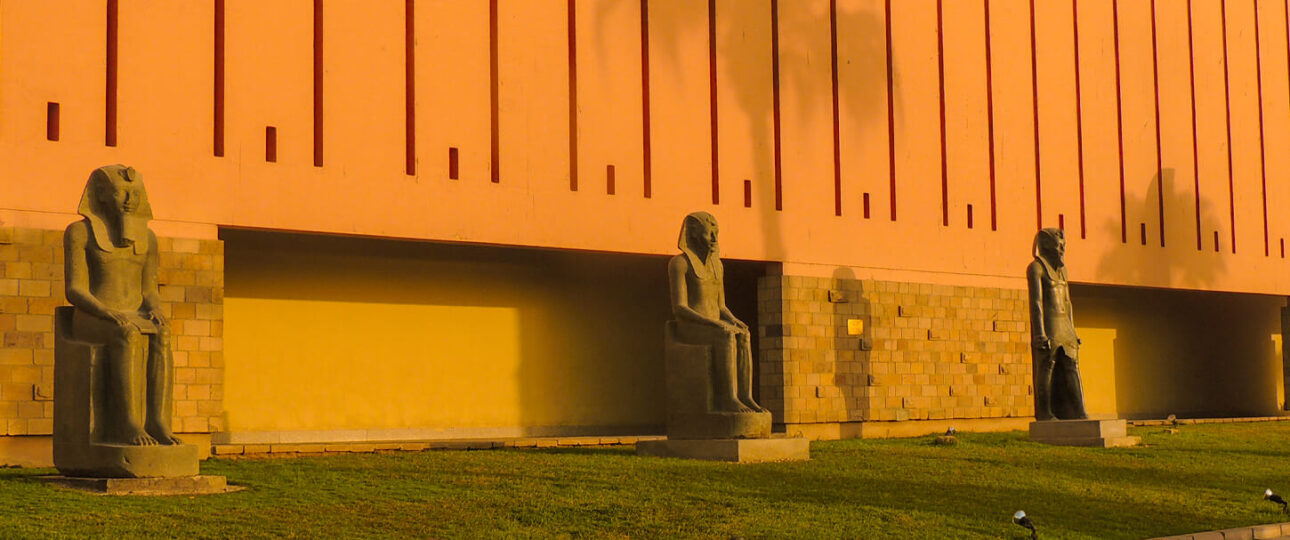Luxor Museum: A Glimpse into Rich Archaeological Treasures
Nestled on the east bank of the Nile River in Luxor, Egypt, Luxor Museum stands as a testament to the glorious past of ancient Egypt. This museum houses an exquisite collection of artifacts that have been carefully curated to offer visitors a glimpse into the fascinating history and culture of this ancient civilization. In this article, we will journey through Luxor Museum, exploring its remarkable exhibits, historical significance, and the unique stories behind its treasures.
- Don’t miss out on our Best Time to Travel to Egypt
The History of Luxor Museum
Luxor Museum was inaugurated in 1975, making it a relatively modern establishment compared to the ancient artifacts it houses. However, its strategic location, close to some of Egypt’s most iconic archaeological sites, has made it a prime destination for tourists and archaeologists alike.
The Architecture of Luxor Museum
The museum’s architecture blends modern design and traditional elements inspired by ancient Egyptian temples. It’s minimalist facade and spacious galleries provide the perfect backdrop for the artifacts on display, allowing visitors to focus on the historical treasures without distractions.
The Statue of Tuthmosis III: A Majestic Presence
One of the most prominent exhibits in the Luxor Museum is the colossal statue of Pharaoh Tuthmosis III. This imposing figure showcases the power and authority of one of Egypt’s greatest warrior pharaohs. The statue’s fine craftsmanship is a testament to the artistic skills of ancient Egyptian sculptors.
The Royal Mummies Gallery: Unraveling the Secrets of the Pharaohs
Luxor Museum also houses the Royal Mummies Gallery, where visitors can glimpse the mummies of ancient pharaohs and other royal family members. These well-preserved mummies provide invaluable insights into the lives and beliefs of Egypt’s ancient rulers.
The Amenhotep III Room: A Tribute to a Great Pharaoh
Dedicated to the reign of Pharaoh Amenhotep III, this room displays an exceptional collection of artifacts, including statues, jewelry, and pottery. The exhibit sheds light on the luxury and cultural achievements of Amenhotep III’s reign.
The Karnak Temple Relief Fragments: A Puzzle of History
Among the fascinating exhibits at Luxor Museum are the relief fragments from the Karnak Temple complex. These intricately carved pieces offer a glimpse into ancient Egyptians’ religious rituals, military conquests, and daily life.
The Nile and Nubia Gallery: Exploring Ancient Trade Routes
The Nile and Nubia Gallery showcases artifacts from Egypt’s southern neighbor, Nubia, highlighting the ancient trade and cultural exchange between the two regions. The exhibit emphasizes the historical interconnectedness of the Nile Valley civilizations.
Luxor Museum and Cultural Preservation
Luxor Museum is crucial in preserving Egypt’s cultural heritage by safeguarding and showcasing the nation’s archaeological treasures. The museum’s efforts to protect and conserve these artifacts ensure that future generations can continue to learn from and appreciate Egypt’s rich history.
Luxor Museum: A Window to Ancient Egypt
Luxor Museum serves as a window to the ancient world, offering a unique opportunity for visitors to immerse themselves in ancient Egypt’s history, art, and culture. Its well-curated exhibits, captivating artifacts, and engaging displays provide a memorable and educational experience for all who walk through its doors.
FAQs about Luxor Museum
What is Luxor Museum known for?
Luxor Museum is renowned for its exceptional collection of ancient Egyptian artifacts, including the Royal Mummies Gallery and the Statue of Tuthmosis III.
When was Luxor Museum established?
Luxor Museum was inaugurated in 1975, making it a relatively modern institution dedicated to ancient Egyptian archaeology.
What can visitors see in the Royal Mummies Gallery?
The Royal Mummies Gallery displays the mummies of ancient pharaohs and royal family members, providing unique insights into their lives and burial practices.
Is Luxor Museum open to the public?
Luxor Museum is open to the public and welcomes visitors worldwide to explore its rich collection.
What are the architectural features of the Luxor Museum?
Luxor Museum’s architecture combines modern design with elements inspired by ancient Egyptian temples, creating a harmonious setting for its exhibits.
What is the significance of the Karnak Temple relief fragments in the museum?
The Karnak Temple relief fragments offer valuable historical information about ancient Egyptian religious practices, military conquests, and daily life.
- Don’t Forget to Explore Egypt’s Travel Tips
Conclusion
Luxor Museum is a cultural treasure trove, offering a captivating journey through Egypt’s ancient past. With its remarkable exhibits, historical significance, and dedication to preserving the nation’s heritage, this museum is a must-visit destination for history enthusiasts, archaeologists, and anyone seeking to immerse themselves in the splendor of ancient Egypt.

